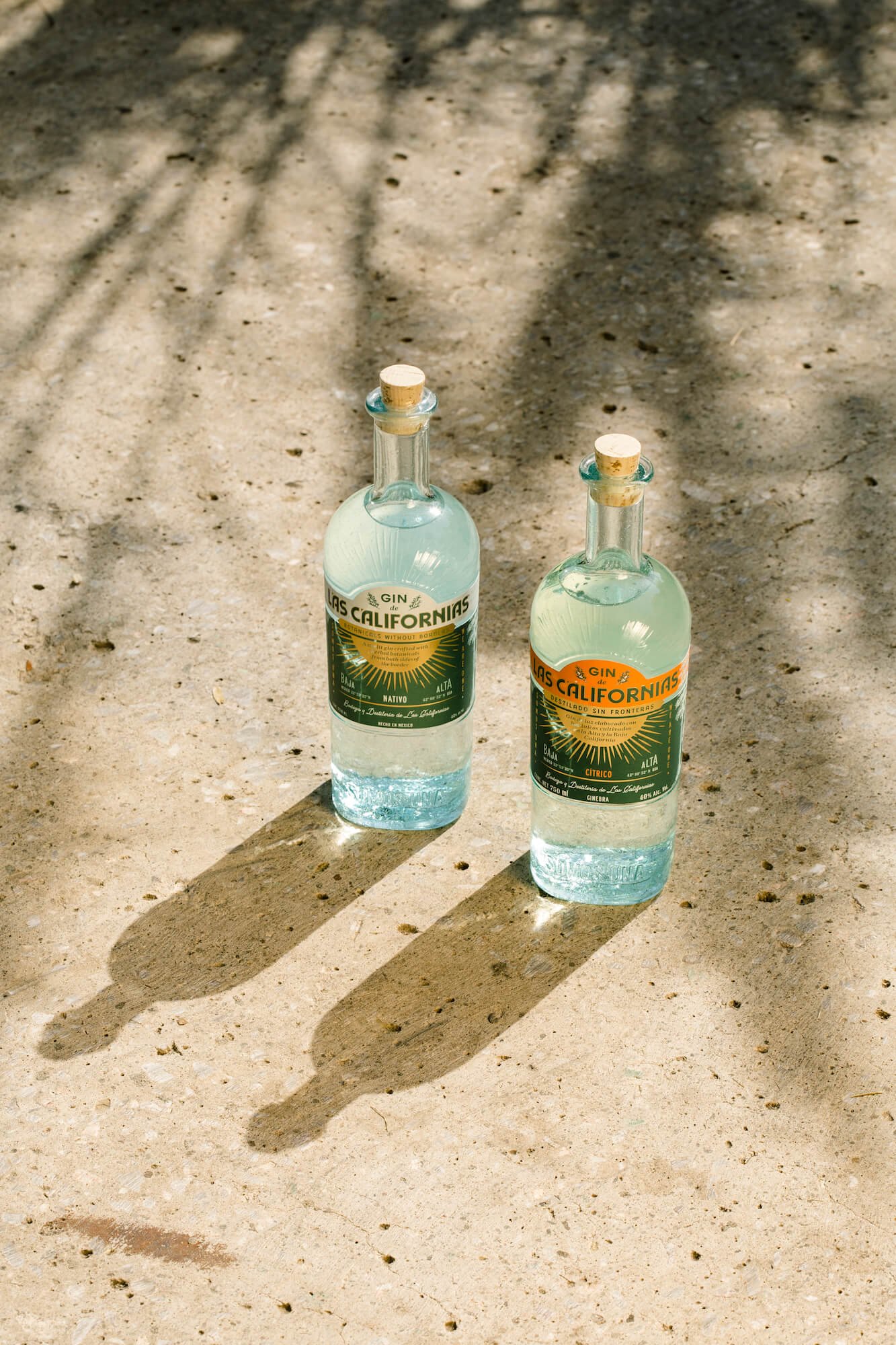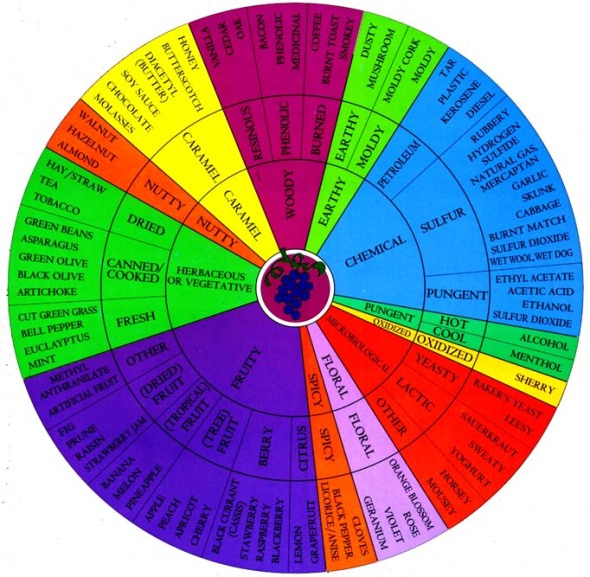
Introduction
Gin is a spirit that offers a unique and captivating flavor experience, setting it apart from other alcoholic beverages. The combination of carefully selected botanicals creates a symphony of tastes that excites mixologists and spirit enthusiasts alike. In order to fully appreciate the distinctive flavors of gin, it is important to pay attention to the overall palate experience, taste profile variations, and the complexity and lingering finishes it offers. By exploring different brands and styles, you can embark on a flavorful journey for your taste buds.
The Basics Of Gin Flavor Characteristics
When it comes to gin, there are some essential flavor characteristics that set it apart from other spirits. Two predominant flavors in most gins are juniper and citrus. Juniper provides the classic piney and resinous taste, while citrus adds a refreshing and zesty touch. Beyond these core flavors, gins can vary in their use of botanicals, which can include spices, herbs, flowers, and fruits. Some common botanicals found in gin include cardamom, coriander, angelica root, and orris root. These botanicals contribute to the complexity and depth of flavor in gin, giving each brand and style its unique character.
The Complexity And Delight Of Premium Gins
While all gins offer a distinct flavor experience, premium gins take it to another level. Premium gins are often crafted with meticulous attention to detail, using a wider variety of botanicals and employing more complex distillation techniques. These gins may have a greater depth of flavor, with a balance of different botanicals that create a harmonious and nuanced palate experience. Additionally, premium gins often have a smoother and more refined finish, making them ideal for sipping on their own or enjoying in cocktails.
It is worth taking the time to explore the world of gin and experiment with different brands and styles. By doing so, you can discover the wide range of flavors and complexities that gin has to offer. So whether you prefer a classic London dry gin or a modern craft gin, let your taste buds embark on a flavorful journey and fully enjoy the distinctive flavors of this beloved spirit.
Citrusy Flavour Profile
Definition And Examples Of Citrusy Gins
Citrus is a dominant flavor in many gins, offering bright, zingy, and zesty notes to the overall taste profile. It encompasses the flavors commonly associated with citrus fruits such as lemon, lime, orange, and grapefruit, as well as the citrus character derived from botanicals like coriander, lemongrass, and verbena. Citrusy gins are known for their refreshing and vibrant taste, making them a popular choice for cocktails and mixed drinks.
Some examples of citrusy gins include:
- Tanqueray Rangpur: This gin features the essence of Rangpur limes, combining the zesty citrus flavor with the traditional juniper-forward profile.
- Beefeater Blood Orange: With its infusion of blood orange, this gin offers a tangy and citrusy twist to the classic gin taste.
- Bombay Sapphire East: In addition to the traditional botanicals, this gin incorporates Thai lemongrass and Vietnamese black peppercorns, resulting in a citrus-forward and subtly spicy flavor.
Tasting Notes And Enjoyment Of Citrusy Gins
Citrusy gins provide a refreshing and invigorating taste experience. Here are some tasting notes and ways to enjoy these gins:
- Aroma: Citrus-forward gins often have a vibrant and aromatic nose, with the zesty and fruity scents immediately noticeable.
- Palate: On the palate, citrusy gins deliver a burst of bright flavors. The citrus notes intertwine with the juniper, creating a harmonious and well-balanced profile. The taste can range from tangy and vibrant to more mellow and rounded, depending on the specific gin.
- Cocktails: Citrusy gins are excellent for making refreshing cocktails. They pair well with tonic water, creating a classic and crisp G&T. They also work beautifully in citrus-themed cocktails like the Tom Collins, Gimlet, or even a simple Martini with a twist of lemon or orange peel.
- Garnishes: To enhance the citrusy flavors, garnish your gin and tonic or cocktail with a slice of lemon, lime, or orange. The oils from the citrus peel will further enhance the aroma and taste.
Exploring the world of citrusy gins can be a delightful adventure for gin enthusiasts. With their lively and zesty characteristics, these gins bring a burst of sunshine to any sip. Whether enjoyed on their own or in a cocktail, citrusy gins offer a refreshing and vibrant taste experience worth savoring.
Floral Flavour Profile
Identifying Floral Gins And Their Fragrant Aromas
In addition to citrusy gins, another popular flavor profile in gin is the floral profile. Floral gins feature botanicals and herbs that provide delicate, aromatic scents reminiscent of flowers. These gins offer a unique and refreshing experience that appeals to those who enjoy lighter and more fragrant flavors.
When tasting floral gins, look out for the following characteristics:
- Aroma: Floral gins have a distinct floral scent, often with notes of rose, lavender, chamomile, or elderflower. Take a moment to experience the delicate and perfumed bouquet.
- Palate: Floral gins offer a subtle and elegant flavor profile. The taste is often described as soft, sweet, and botanical, with the floral notes harmonizing with the juniper base. The intensity of the floral flavors may vary depending on the specific gin.
Appreciating The Floral Notes In Gins
Floral gins provide a different taste experience compared to citrusy gins. Here are some tips on how to enjoy and appreciate the floral notes in these gins:
- Sipping: Enjoy floral gins on their own to fully appreciate their delicate flavors. Take small sips and allow the floral notes to unfold on your palate.
- Gin and Tonic Variations: For a twist on the classic Gin and Tonic, pair a floral gin with a floral tonic water or a light tonic. This combination will enhance the botanical and floral characteristics of the gin.
- Herbal Cocktails: Floral gins are excellent for creating herbal cocktails. Experiment with mixers like elderflower liqueur, lavender syrup, or chamomile-infused vermouth to enhance the floral flavors.
Exploring floral gins allows gin enthusiasts to discover a new dimension of flavors. With their delicate and aromatic profiles, these gins offer a sensory experience that is perfect for those seeking a lighter and more fragrant spirit.

Herbal Flavour Profile
Exploring The Herbal Aromatics In Gins
In addition to floral gins, another popular flavor profile in gin is the herbal profile. Herbal gins feature a blend of botanicals and herbs that create a robust and earthy aroma. These gins provide a unique and complex flavor experience that appeals to those who enjoy the rich and fragrant tastes of herbs.
When tasting herbal gins, here are key characteristics to look out for:
- Aroma: Herbal gins possess a distinct herbal scent, often with notes of thyme, sage, basil, or coriander. Take a moment to savor the aromatic bouquet.
- Palate: Herbal gins offer a bold and savory flavor profile. The taste is often described as herbaceous, with the botanical notes balancing with the juniper base. The intensity of the herbal flavors may vary depending on the gin brand.
How To Recognize And Savor Herbal Gins
To fully appreciate the herbal notes in these gins, here are some tips:
- Enjoying Neat: Sip herbal gins neat to experience their full range of flavors. Take small sips and allow the herbal notes to unfold on your palate.
- Crafting Herb-Infused Cocktails: Herbal gins are perfect for creating cocktails with an earthy twist. Experiment with mixers like basil-infused simple syrup, rosemary garnish, or cilantro-infused vermouth to enhance the herbal flavors.
- Pairing with Ingredients: Consider pairing herbal gins with ingredients that complement their flavor profile. For example, pairings such as cucumber, mint, or bell pepper can enhance the herbal notes in the gin.
Exploring herbal gins allows gin enthusiasts to experience a new dimension of flavors. With their robust and earthy profiles, these gins offer a sensory adventure that is perfect for those seeking a rich and fragrant spirit.
Hot And Spicy Flavour Profile
Discovering The Heat And Spiciness In Gins
In addition to the herbal flavour profile, another captivating taste experience in gin comes from the hot and spicy profile. Gins in this category feature a blend of botanicals and spices that impart a fiery and invigorating sensation. These gins offer a unique and intense flavour experience that appeals to those who enjoy the bold and vibrant tastes of heat and spice.
When exploring hot and spicy gins, here are some key characteristics to look out for:
- Aroma: Hot and spicy gins have a distinct aromatic character, often with notes of ginger, black pepper, cardamom, or chili. Take a moment to inhale the enticing scent.
- Palate: These gins deliver a punch of heat and spice on the palate. The taste is often described as fiery, with the botanicals and spices complementing the juniper base. The intensity of the hot and spicy flavours may vary depending on the gin brand.
Enhancing Cocktails With Hot And Spicy Gins
To fully appreciate the heat and spice in these gins, here are some tips:
- Enjoying Neat: Sip hot and spicy gins neat to experience their full range of flavours. Take small sips and allow the fiery notes to ignite your taste buds.
- Crafting Spicy Cocktails: Hot and spicy gins are perfect for creating cocktails with a kick. Experiment with mixers like ginger beer, jalapeno-infused simple syrup, or a chili rim for an extra spicy twist.
- Pairing with Ingredients: Consider pairing hot and spicy gins with ingredients that complement their flavour profile. Ingredients like lime, cilantro, or mango can help balance out the heat and bring out the complex flavours of the gin.
Exploring hot and spicy gins opens up a new realm of flavours for gin enthusiasts. With their intense and fiery profiles, these gins offer a sensory adventure that is perfect for those seeking a bold and invigorating spirit.
Piney Flavour Profile
Understanding Piney Gins And Their Distinctive Taste
Piney gins are known for their unique and distinctive flavor profile. These gins derive their signature taste from the prominent presence of juniper berries. The juniper berries impart a pine-like flavor to the gin, which is the defining characteristic of this particular type of gin. The taste of juniper berries can be described as resinous and slightly sweet, and it adds a refreshing and aromatic quality to the gin.
The intensity of the piney flavor can vary depending on the type of gin. London dry gin, for example, is known for having a more pronounced juniper flavor compared to other types of gin. This makes it a preferred choice for those who appreciate the bold and unmistakable taste of juniper.
Creative Uses And Pairings With Piney Gins
Piney gins offer a wide range of possibilities when it comes to creating cocktails and exploring flavor pairings. Here are a few ideas to enhance your gin-drinking experience:
- Classic Gin and Tonic: The piney flavor of these gins pairs exceptionally well with the bitterness of tonic water. Garnish with a twist of lemon or a sprig of rosemary to enhance the aromatic qualities.
- Citrus Infusion: The bright citrus flavors, such as lime or grapefruit, complement the piney notes of gin beautifully. Consider adding a splash of citrus juice or garnishing with a citrus twist to balance out the flavors.
- Herbal Combinations: Experiment with herbs like thyme, basil, or sage to elevate the piney taste of the gin. These herbs add depth and complexity to the overall flavor profile.
- Savory Pairings: Match the piney gin with savory ingredients like olives, pickles, or even smoked meats. The combination of the juniper’s resinous flavor and the savory elements creates a unique and satisfying drinking experience.
Whether enjoyed on its own or used as the base for creative cocktails, piney gins offer a delightful and refreshing taste experience. The pine-like notes provide a crisp and clean flavor profile that is a favorite among gin enthusiasts seeking a truly distinctive spirit.
Other Flavour Profiles
Highlighting Berry, Grassy, Sweet, Nutty, And Rooty Gins
Berry Flavour Profile:
Berries are commonly used botanicals in gin production, offering a sweet and fruity taste. Raspberry, strawberry, blackberry, and cranberry are just a few examples of the berries that lend their flavors to gin. These gins often have a vibrant red or pink hue and can be enjoyed on their own or incorporated into cocktails for a refreshing twist.
Grassy Flavour Profile:
Some gins have a grassy taste, which is derived from botanicals such as coriander, green tea, or even fresh herbs like mint or parsley. The grassy notes add a fresh and herbal element to the gin, creating a unique taste experience that is reminiscent of the outdoors.
Sweet Flavour Profile:Sweet gins are characterized by their sugar-like taste, which can be achieved through the addition of botanicals like licorice, angelica root, or even floral elements like rose petals or lavender. These gins offer a smooth and indulgent flavor profile that can be enjoyed neat or used as a base for sweet cocktails.
Nutty Flavour Profile:Gins with a nutty taste often feature botanicals like almonds, hazelnuts, or even chestnuts. These ingredients add a subtle nuttiness to the gin, creating a rich and creamy flavor profile that is perfect for sipping or incorporating into dessert-inspired cocktails.
Rooty Flavour Profile:Rooty gins derive their flavors from botanicals like orris root, ginger, or even angelica root. These botanicals contribute earthy and slightly spicy notes to the gin, resulting in a complex and robust flavor profile that is ideal for those who enjoy a more intense taste experience.
Expanding The Spectrum Of Gin Taste Exploration
With such a wide variety of botanicals and flavor combinations available, gin offers an endless world of taste exploration. Mixologists and spirit enthusiasts can experiment with different botanical profiles, creating unique gin flavors that cater to a wide range of preferences.
The versatility of gin allows for countless flavor possibilities and an opportunity to discover new taste sensations. From piney gins to berry-infused varieties, there is a gin for every palate.
Next time you enjoy a gin cocktail or sip a neat pour, take a moment to appreciate the complex flavors and botanical combinations that make gin such a fascinating and diverse spirit. Cheers to exploring the world of gin and uncovering your favorite flavor profile.

Describing Flavour At Downton Distillery UK
Insights From Tasters And Experts
The flavour profile of a gin can be a complex and multi-layered experience. At Downton Distillery UK, the Gin Foundry botanical tasting wheel is used to help identify and describe the various flavours found in their gins. This tool associates colours with flavour types and then specifies the botanicals that contribute to those flavours.
Through tastings and numerous reviews, the Gin Foundry has expanded the common terms used in describing gins. In addition to the six most common terms – citrusy, floral, herbal, hot, piney, and spicy – they have included berries, grassy, sweet, nutty, and rooty characteristics to further quantify and describe the flavours of their gins.
Significance Of Describing Flavour In Gin
Describing the flavour profile of a gin is crucial for both consumers and producers. For consumers, it helps them understand and identify the botanicals that contribute to the taste they enjoy. It allows them to make informed decisions when choosing a gin and helps them explore new flavour profiles that align with their preferences.
For producers, describing the flavour profile of their gin is an essential marketing tool. It helps them communicate the unique characteristics of their product and differentiate it in a competitive market. It also allows them to highlight the botanicals used in their gin production, showcasing the craftsmanship and attention to detail that goes into creating their spirits.
By expanding the range of flavour profiles available, producers like Downton Distillery UK offer consumers a diverse and exciting world of taste exploration. From berry-infused gins to nutty or rooty varieties, there is a gin for every palate and preference.
In conclusion, describing the flavour profile of a gin is an important aspect of the gin industry. It not only helps consumers in their decision-making process but also allows producers to showcase their unique offerings. With the abundance of botanicals and flavour combinations available, gin truly offers an endless world of taste exploration. Cheers to discovering your favorite flavour profile!
Describing Flavour At Downton Distillery UK
Insights From Tasters And Experts
The flavour profile of a gin can be a complex and multi-layered experience. At Downton Distillery UK, the Gin Foundry botanical tasting wheel is used to help identify and describe the various flavours found in their gins. This tool associates colours with flavour types and then specifies the botanicals that contribute to those flavours.
Through tastings and numerous reviews, the Gin Foundry has expanded the common terms used in describing gins. In addition to the six most common terms – citrusy, floral, herbal, hot, piney, and spicy – they have included berries, grassy, sweet, nutty, and rooty characteristics to further quantify and describe the flavours of their gins.
Significance Of Describing Flavour In Gin
Describing the flavour profile of a gin is crucial for both consumers and producers. For consumers, it helps them understand and identify the botanicals that contribute to the taste they enjoy. It allows them to make informed decisions when choosing a gin and helps them explore new flavour profiles that align with their preferences.
For producers, describing the flavour profile of their gin is an essential marketing tool. It helps them communicate the unique characteristics of their product and differentiate it in a competitive market. It also allows them to highlight the botanicals used in their gin production, showcasing the craftsmanship and attention to detail that goes into creating their spirits.
By expanding the range of flavour profiles available, producers like Downton Distillery UK offer consumers a diverse and exciting world of taste exploration. From berry-infused gins to nutty or rooty varieties, there is a gin for every palate and preference.
At Downton Distillery UK, they take pride in their wide selection of gins, each with its own distinct flavour profile. Whether you prefer a citrusy and floral gin or a more herbal and spicy one, there is something for everyone to enjoy.
So, if you’re looking to embark on a gin-tasting adventure, Downton Distillery UK is the perfect place to start. Their expertly crafted gins offer a range of unique flavours that will delight and surprise your taste buds. Don’t miss out on the opportunity to explore the world of gin and discover your own favourite flavour profile.
With Downton Distillery UK’s dedication to flavour and quality, you can trust that each sip of their gin will be a memorable and enjoyable experience. Cheers to discovering new and exciting tastes!
FAQ: Gin Taste Exploration: Describing the Unique Flavor Profile of Gin
Q: What is gin?
A: Gin is a spirit that is primarily flavored with juniper berries and other botanicals. It is known for its distinctive aroma and taste.
Q: What makes gin unique?
A: Gin stands out for its distinctive flavor profile, which is achieved by infusing juniper berries and various botanicals during the distillation process. These botanicals can include herbs, spices, fruits, and even flowers, providing gin with a wide range of flavors.
Q: How does gin taste?
A: The taste of gin can vary depending on the botanical blend used and the distillation process. However, gin typically has a complex and balanced flavor profile that includes prominent notes of juniper, citrus, and herbal or floral undertones. The taste can range from crisp and dry to rich and aromatic.
Q: What are some common botanicals found in gin?
A: Besides juniper berries, you can find an array of botanicals in gin. Some common ones include coriander, angelica root, citrus peels like lemon or orange, cardamom, orris root, cinnamon, and cassia bark. These botanicals add depth, complexity, and unique flavors to the spirit.
Q: Are all gins the same?
A: No, not all gins are the same. Each gin brand has its own unique recipe and distillation process, resulting in a distinct flavor profile. Some gins emphasize certain botanicals, while others may experiment with unconventional ingredients. This diversity in production methods contributes to the wide range of gins available.
Q: Can gin be enjoyed neat or is it mainly used in cocktails?
A: Gin can be enjoyed neat, served straight in a glass without any mixers, or on the rocks with ice. This allows you to fully appreciate the nuanced flavors of the spirit. However, gin is also a versatile base for numerous classic cocktails such as the Martini, Negroni, and Gin and Tonic.
Q: How can I explore the different flavors of gin?
A: To explore the unique flavor profiles of gin, you can try different brands and types of gin. Look for gins that use different botanical blends or experiment with aged gins, barrel-aged or infused gins, and flavored gins. Tasting them side by side or in various cocktails can enhance your gin-tasting experience.
Q: What food pairings go well with gin?
A: Gin pairs well with a variety of foods. Its botanical flavors make it an excellent choice with seafood like oysters, smoked salmon, or shrimp. It also complements light and fresh dishes like salads or grilled vegetables. Additionally, the herbal and citrus undertones in gin make it a great companion to dishes with lemon, lime, or herb-based sauces.
Q: Are there any specific glassware or garnishes recommended when enjoying gin?
A: While there is no strict rule, gin is commonly served in a tulip-shaped or balloon glass. These glasses allow for the concentration and appreciation of the aromas. For garnishes, try adding a citrus peel such as lemon or lime twist, or experiment with fresh herbs like rosemary or basil. These additions can enhance the aroma and add an extra layer of flavor to your gin experience.
Remember, the best way to explore the unique flavor profile of gin is to experiment and find the botanical blends and serving methods that suit your personal taste preferences. Cheers!

New Life Juice Bar & Lounge (NLJB) is a vibrant and inviting organic, all-natural juice bar dedicated to providing a warm and friendly environment for all juice enthusiasts. From the moment you step through our doors, you’ll feel the positive and energizing vibes that make NLJB a must-visit destination. Our journey began with a vision to create a space where people could embrace a healthy lifestyle while enjoying delicious and nutritious organic juices. We are passionate about using only the freshest, locally sourced ingredients to craft our diverse menu of organic offerings. Whether you’re craving a rejuvenating green juice, a refreshing fruit smoothie, or a detoxifying cleanse, NLJB has something to tantalize every taste bud.